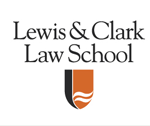We the People and Other Constitutional Tales: Teaching Constitutional Meaning Through Narrative
Document Type
Article
Publication Title
The Law Teacher
Journal Abbreviation
Law Tchr.
Abstract
The narratives associated with a landmark constitutional case, including the socio-political struggles that give rise to the dispute and the resulting litigation, are an important, and overlooked, aspect of constitutional understanding. An examination of these narratives can elucidate circumstances that have been overlooked in the formalized articulation of constitutional norms. It can provide a more nuanced understanding of the conflict, and, in some instances, an altered interpretation of doctrine. Traditional legal education typically omits any substantial consideration of the external historical events that give rise to landmark cases. The omission of these external narratives may serve to distort the doctrinal complexity of major cases. This article demonstrates the significance of narrative by examining five stories describing a significant U.S. Supreme Court case, Pierce v. Society of Sisters. These stories illuminate the impact of contextual narrative upon constitutional meaning. The paper argues that contextual narrative should be incorporated into the teaching of constitutional doctrine to ensure a more accurate understanding of constitutional meaning. The article explores various methods of teaching Pierce to demonstrate the marked difference between the highly formalized analysis typical of conventional legal education and the multi-faceted legal, political, and social comprehension gained through contextual narrative.
First Page
247
Last Page
259
Publication Date
2007
Recommended Citation
Paula L. Abrams,
We the People and Other Constitutional Tales: Teaching Constitutional Meaning Through Narrative,
41
Law Tchr.
247
(2007).
Available at:
https://lawcommons.lclark.edu/faculty_articles/16


Comments
Lewis & Clark Law School Legal Studies Research Paper No. 2008-10